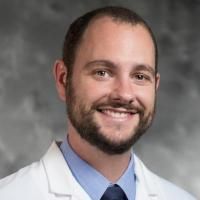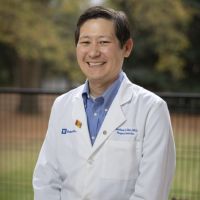An evaluation of physician predictions of discharge on a general medicine service.
Date
2015-12
Journal Title
Journal ISSN
Volume Title
Repository Usage Stats
views
downloads
Citation Stats
Attention Stats
Abstract
The goal of this study was to evaluate general medicine physicians' ability to predict hospital discharge. We prospectively asked study subjects to predict whether each patient under their care would be discharged on the next day, on the same day, or neither. Discharge predictions were recorded at 3 time points: mornings (7-9 am), midday (12-2 pm), or afternoons (5-7 pm), for a total of 2641 predictions. For predictions of next-day discharge, the sensitivity (SN) and positive predictive value (PPV) were lowest in the morning (27% and 33%, respectively), but increased by the afternoon (SN 67%, PPV 69%). Similarly, for same-day discharge predictions, SN and PPV were highest at midday (88% and 79%, respectively). We found that although physicians have difficulty predicting next-day discharges in the morning prior to the day of expected discharge, their ability to correctly predict discharges continually improved as the time to actual discharge decreased. Journal of Hospital Medicine 2015;10:808-810. © 2015 Society of Hospital Medicine.
Type
Department
Description
Provenance
Subjects
Citation
Permalink
Published Version (Please cite this version)
Publication Info
Sullivan, B, D Ming, JC Boggan, RD Schulteis, S Thomas, J Choi and J Bae (2015). An evaluation of physician predictions of discharge on a general medicine service. J Hosp Med, 10(12). pp. 808–810. 10.1002/jhm.2439 Retrieved from https://hdl.handle.net/10161/12041.
This is constructed from limited available data and may be imprecise. To cite this article, please review & use the official citation provided by the journal.
Collections
Scholars@Duke

Brian Sullivan
I am a Physician Scientist in Gastroenterology, with a research focus in optimizing colorectal cancer (CRC) screening and surveillance recommendations, including colonoscopy and other non-invasive screening modalities. Specifically, we are evaluating current and evolving CRC screening strategies, as well as identifying people at high risk for underlying hereditary/genetic CRC syndromes.

David Yung Ming
I am a med-peds hospitalist and researcher with interests in improving systems of care of patients with complex health needs. My research focus areas include implementation science, population health sciences, community-engaged research, and digital health. My vision is to design, implement, evaluate, and scale programs and interventions that will simplify the delivery of complex care. By doing so, we can equitably improve the health outcomes that matter most to children and adults with complex health needs and their families.

Joel Boggan
I am a hospital medicine physician interested in quality improvement, patient safety, and medical education across the UME and GME environments. My current projects include work on readmissions, inpatient quality and patient experience measures, appropriate utilization of inpatient resources, systematic reviews of topics related to healthcare quality, and artificial intelligence in medical education. Alongside this work, I serve as the lead mentor for our Durham VA Chief Resident in Quality and Safety within the Department of Medicine and the Program Director for the Duke University Hospital CRQS.
As Associate Program Director for Quality Improvement and Patient Safety in the Duke Internal Medicine Residency Program, I oversee QI and safety education and projects for our residents and help co-lead our Residency Patient Safety and Quality Council. Additionally, I supervise housestaff and students on our general medicine wards, precept housestaff evidence-based medicine resident reports, and serve as a small group leader for our second-year medical student Clinical Skills Course. Finally, I lead our Innovation Sciences thread as part of the ongoing School of Medicine Curriculum Innovation Initiative and serve as a co-course director for our QMDM II (Biostatistics) course.

Samantha Thomas
Samantha is the manager of the Duke Cancer Institute (DCI) Biostatistics Shared Resource. Collaboratively, she primarily works with physicians in DCI, specifically in research of Endocrine Neoplasia and Breast Cancer. She is also the director of the Biostatistics, Epidemiology, Research, and Design Methods (BERD) Core Training and Internship Program (BCTIP). Her professional experience involves study design, analysis, and reporting of clinical trials and observational studies. Her specific areas of interest include training of collaborative biostatisticians, modeling of non-linear associations, and application of partitioning analyses to identify homogeneous patient groups.

Jonathan Gregory Bae
Patient safety and quality improvement, hospital based performance improvement, care transitions and hospital readmissions, general internal medicine hospital care, resident and medical student education.
Unless otherwise indicated, scholarly articles published by Duke faculty members are made available here with a CC-BY-NC (Creative Commons Attribution Non-Commercial) license, as enabled by the Duke Open Access Policy. If you wish to use the materials in ways not already permitted under CC-BY-NC, please consult the copyright owner. Other materials are made available here through the author’s grant of a non-exclusive license to make their work openly accessible.
